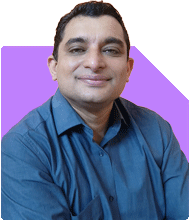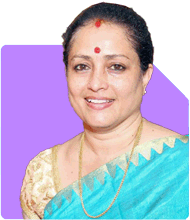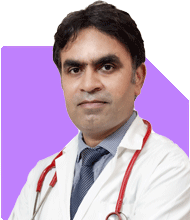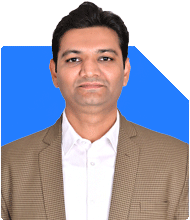My wife can't walk without support - What should I do?
Dr Shakeeb Ahmed Khan |139 Answers |Ask -Follow
Physiotherapist - Answered on May 22, 2024
He has served as a technical consultant for the World Health Organisation, the United Nations, the Tata Institute of Social Sciences and several national and international NGOs.
Besides physiotherapy, he is keenly interested in disability management, early intervention, geriatric care and assisting children with disabilities.
Dr Khan has a bachelor's degree in physiotherapy from the Ravi Nair Physiotherapy College in Wardha, Maharashtra, a master's degree in disability rehabilitation administration from the National Institute for the Mentally Handicapped, Secunderabad, and a PhD in disability management from Bangalore University.... more

My wife had suffered with Guillain-Barre Syndrome (GBS) in November 2022, immediately she was hospitalized and treatment of IVIG injections with 5 days course was provided. As her legs were not moving, she was shifted to Physiotherapy Rehabilitation Centre. After 4 months of rigorous treatment she was able to move with leg support & stick, but still after completion of of 1 year their is no progress. Presently also she is at the same stage and not able to walk independently without leg support and stick. Kindly advise.....
You may like to see similar questions and answers below
Dr Karthiyayini Mahadevan |1145 Answers |Ask -Follow
General Physician - Answered on Jun 19, 2024
Dr Shakeeb Ahmed Khan |139 Answers |Ask -Follow
Physiotherapist - Answered on Jun 01, 2024
Dr Karthiyayini Mahadevan |1145 Answers |Ask -Follow
General Physician - Answered on Sep 18, 2024
Dr Chandrakant Lahariya | Answer |Ask -Follow
Diabetologist, Consultant Physician, Vaccine Expert - Answered on Nov 05, 2024
Rajesh Kumar Singh |96 Answers |Ask -Follow
IIT-JEE, GATE Expert - Answered on Feb 22, 2025
Rajesh Kumar Singh |96 Answers |Ask -Follow
IIT-JEE, GATE Expert - Answered on Feb 22, 2025
Prof Suvasish Mukhopadhyay |397 Answers |Ask -Follow
Career Counsellor - Answered on Feb 22, 2025
Radheshyam Zanwar |1236 Answers |Ask -Follow
MHT-CET, IIT-JEE, NEET-UG Expert - Answered on Feb 22, 2025
Vipul Bhavsar |26 Answers |Ask -Follow
Tax Expert - Answered on Feb 22, 2025
Radheshyam Zanwar |1236 Answers |Ask -Follow
MHT-CET, IIT-JEE, NEET-UG Expert - Answered on Feb 22, 2025
Mayank Chandel |2037 Answers |Ask -Follow
IIT-JEE, NEET-UG, SAT, CLAT, CA, CS Exam Expert - Answered on Feb 22, 2025
Radheshyam Zanwar |1236 Answers |Ask -Follow
MHT-CET, IIT-JEE, NEET-UG Expert - Answered on Feb 22, 2025
Mayank Chandel |2037 Answers |Ask -Follow
IIT-JEE, NEET-UG, SAT, CLAT, CA, CS Exam Expert - Answered on Feb 22, 2025
Mayank Chandel |2037 Answers |Ask -Follow
IIT-JEE, NEET-UG, SAT, CLAT, CA, CS Exam Expert - Answered on Feb 22, 2025























